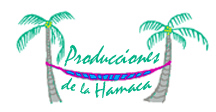The Plants of Caye Caulker
Jacob Rietsema, Ph.D., and Dorothy Beveridge
For more information on the plants of Caye Caulker, click here for the paper, "The Vegetation of Caye Caulker" by Jacob Rietsema, Dorothy Beveridge, and Judy Lumb.

The Caye Caulker Branch of the Belize Tourism Industry Association is proud to announce the publication of The Plants of Caye Caulker, which presents the 257 plants on the island of Caye Caulker, Belize, that were collected in a thorough inventory done from 2005-2009 by Dr. Jacob Rietsema and Dorothy Beveridge. Each plant is shown in beautiful photographs and described in accessible text. All photographs have been made of plants as they grow on Caye Caulker. Villagers who allowed us to collect plants from their gardens also shared with us their extensive knowledge of local plant names, as well as the medical and culinary uses, documenting our cultural heritage. A Glossary explains the botannical terms used. The geography, history, and conservation work of Caye Caulker introduces the book. General plant structure is described and illustrated. The plants are fully indexed. This book will be useful for experts and visitors to not only Caye Caulker, but the many other Belizean islands.
"The past two decades Belize has gone from virtually "terra incognita" to an amazingly well documented biodiversity spot in the region. Scientists, students, residents and visitors have now access to a large selection of guides; Mammals, Birds, Reptiles, Amphibians, Fishes, Marine Life, most of the obvious groups can now be identified. But one "obvious" group has remained elusive; the higher plants. Possibly because there are nearly 4,000 of them and a popularized guide would be simply too much work and too expensive. But now at last, here is a guide to the plants of Caye Caulker! Admittedly this is only a small part of Belize, but a popular part, and it is a start, an important start. For that matter, the book should prove itself useful not only on Caye Caulker but on all of the Belizean Cayes and Coastal Zone. I would even carry it when visiting Roatan and Cozumel The book identifies plants by ecosystem, which makes life easier for the layman but the public should not be limited to just residents and visitors. The basis of the book is the first thorough inventory since the work of Stoddard, Fosberg and Spelman of 1982. And as such the book is a time capsule, documenting the dynamics of the vegetation of the Belizean Cayes." --- Jan Meerman
"Although I had a modest familiarity with the flora of the western and midwestern United States, I was wholly unprepared for the diversity of botanical delights that awaited me when I first visited Caye Caulker in 1989. The Plants of Caye Caulker by Jacob Rietsema and Dorothy Beveridge is the guide to the flora of Caye Caulker I wish I had on that first visit.
"Well-chosen colored photographs clearly illustrate the salient floral and vegetative characteristics of over 200 native and introduced angiosperm and gymnosperm species found on and in the waters surrounding Caye Caulker. Each species is identified by its botanical family, scientific name and common name(s). In addition the authors provide a brief description for each species that also includes interesting information about the plant’s habitat and uses by humans. Should the botanical terminology intimidate the reader, the authors offer an illustrated introduction to plant anatomy at the beginning of the guide and a glossary of terms near its end.
"Not only are the more conspicuous plants (such as the "coconut palm") and plants with showy flowers (the aptly named "flamboyant" immediately comes to mind) found in this book, the authors also include the too frequently ignored and underappreciated plants, such as grasses, rushes, sedges and sea grasses. No plant, regardless of how inconspicuous it might be, is overlooked in this comprehensive guide.
"The arrangement of plant species in this guide is intuitively appealing. If you discover a "new" plant growing along one of the many paths on Caye Caulker, open your guide to the Roadside and Open Areas chapter and begin to peruse the photographs and glance over the descriptions. If the plant that caught your fancy is growing in a village garden, a quick scan of the Gardens chapter is likely to reveal the identity of the plant in question. Additional chapter headings are as follows: Mangroves, Wetlands, Palms, Trees, Littoral Forest, Climbing Plants, Grasses and Underwater. Thus the identification of an unfamiliar species becomes relatively simple and absolutely painless.
"I highly recommend this book to anyone visiting Caye Caulker or nearby cayes who is interested in plants, ethnobotany and/or natural history. This guide will appeal to the aspiring botanist as well as to the seasoned veteran. And if you plan to bring a group of students to the Belizean cayes, as I first did 20 years ago, be certain to have a copy of this book close at hand. It is a well-crafted, user-friendly treasure trove of botanical information. It will not disappoint." --- Michael Amspoker, Ph.D.
